False Solomon’s Seal
- October 11, 2023
- 0 comment
False Solomon’s Seal, scientifically known as Maianthemum racemosum, is a graceful and understated perennial plant native to North America. This woodland beauty belongs to the Lily family and is often found in shaded, damp forests, making it a favorite among gardeners looking to recreate a natural, woodland atmosphere. False Solomon’s Seal stands out for its elegant, arching stems adorned with alternating, lance-shaped leaves and delicate, creamy-white, star-shaped flowers that bloom in late spring to early summer.
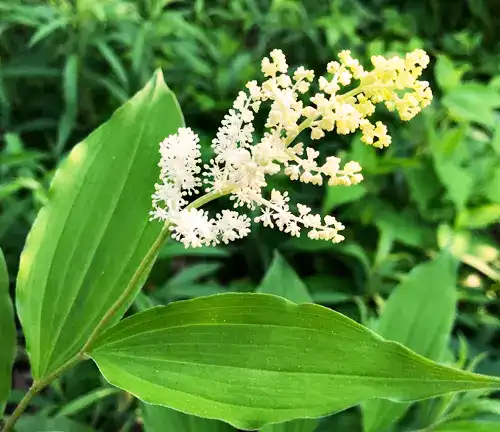

Following the blossoms, small, green berries appear, transforming into bright red or orange, providing an additional ornamental element. Unlike its close relative, true Solomon’s Seal, the leaves of this plant are not connected to the stem in a typical seal-like pattern. With its aesthetic appeal and ease of cultivation, False Solomon’s Seal is a cherished addition to shaded gardens, where it thrives as a resilient, low-maintenance, and attractive perennial.
| Characteristics | Description |
| Scientific Name | Maianthemum racemosum |
| Common Names | False Solomon’s Seal, Solomon’s Plume |
| Family | Liliaceae |
| Type | Perennial |
| Height | 1 to 3 feet (30 to 90 cm) |
| Spread | 1 to 2 feet (30 to 60 cm) |
| Foliage | Alternating, lance-shaped leaves |
| Flowers | Small, creamy-white, star-shaped, in a terminal raceme |
| Bloom Time | Late spring to early summer |
| Fruit | Small, green berries turning bright red or orange |
| Sun Exposure | Partial to full shade |
| Soil | Moist, well-draining, rich, and humus-rich |
| USDA Hardiness Zones | 3 to 8 |
| Maintenance | Low |
| Uses | Shade gardens, woodland gardens, naturalized areas |
| Native Range | North America (primarily eastern and central regions) |
Botanical Beauty of “False Solomon’s Seal”
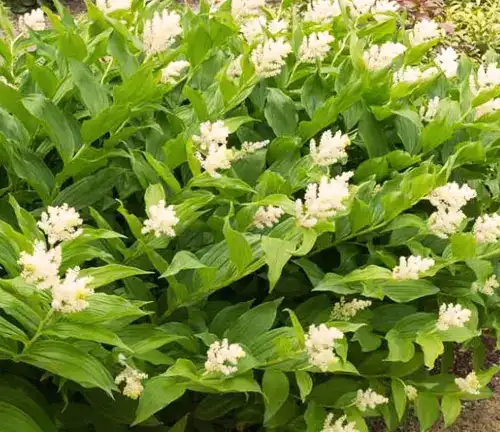
In the dappled shade of North American woodlands, a subtle and enchanting perennial takes root, capturing the hearts of gardeners and nature enthusiasts alike. False Solomon’s Seal, or Maianthemum racemosum, is a botanical gem that deserves admiration. Its beauty lies in its simple yet elegant features, from its arching stems to its delicate flowers, making it a centerpiece of woodland landscapes.
Woodland Elegance
False Solomon’s Seal gracefully flaunts its lance-shaped leaves on arching stems, creating an enchanting display of greenery in shaded gardens. Unlike its true Solomon’s Seal counterpart, its leaves do not connect to the stem in a seal-like pattern. This characteristic adds an element of uniqueness, a distinctive touch to the forest floor. Its creamy-white, star-shaped flowers, which bloom from late spring to early summer, add a touch of ethereal elegance to the woodland backdrop. Following the blooms, green berries make their appearance, later transforming into vibrant red or orange jewels. False Solomon’s Seal is the embodiment of woodland elegance.
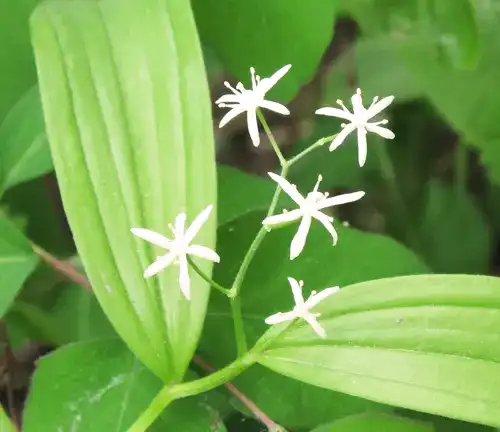
Ecological Importance

This unassuming plant plays a vital role in forest ecosystems. As a native species, it supports local wildlife by providing food and habitat. The berries it produces serve as a food source for various birds and small mammals, contributing to the biodiversity of the region. Additionally, the plant’s presence aids in soil stabilization, preventing erosion and maintaining the health of the forest floor.
Cultivation and Conservation
Cultivating False Solomon’s Seal is a joy for gardeners who seek to recreate the tranquility of a woodland environment in their yards. It thrives in partial to full shade and prefers moist, well-draining, humus-rich soil. The plant’s low maintenance requirements make it an attractive addition to gardens, both large and small. However, as with many native species, conservation efforts are essential to protect it from habitat loss and overharvesting. Efforts to safeguard this species help preserve its beauty and ecological role.
Fragrance
Though False Solomon’s Seal may not be known for its fragrance, its unassuming beauty still draws people in. It relies on its visual charm rather than scent to captivate its admirers. The allure of this plant lies in its understated grace, making it a favorite for those who appreciate subtlety.
Soil Stabilization
Beyond its visual appeal, False Solomon’s Seal has a practical side, playing a vital role in maintaining the integrity of forest ecosystems. Its root system helps stabilize the soil, preventing erosion in the understory of woodlands. This not only benefits the plant itself but also contributes to the overall health of the ecosystem.
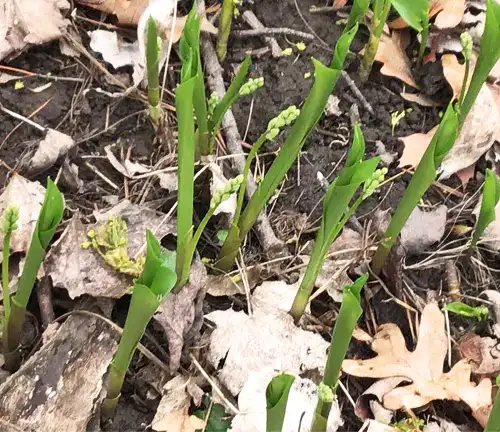
Common Uses
Gardeners and landscapers often turn to False Solomon’s Seal to create a natural and woodland-like atmosphere. It’s a favorite for shaded gardens, where it flourishes in the absence of direct sunlight. Its graceful appearance and minimal care requirements make it a go-to choice for adding a touch of the wild to cultivated landscapes.
Benefits
The benefits of including False Solomon’s Seal in your garden extend beyond its aesthetics. Its ecological importance in supporting local wildlife, preventing soil erosion, and enriching the forest floor should not be underestimated. Furthermore, its ease of cultivation and ability to thrive in shaded areas make it a practical choice for those seeking a low-maintenance yet visually captivating addition to their outdoor spaces. By appreciating the botanical beauty of False Solomon’s Seal and understanding its ecological role, we can better preserve and appreciate this charming woodland plant.
Frequently Asked Questions (FAQs)
- What is False Solomon’s Seal? False Solomon’s Seal, scientifically known as Maianthemum racemosum, is a graceful perennial plant native to North America. It belongs to the Lily family and is characterized by its arching stems, lance-shaped leaves, delicate, creamy-white, star-shaped flowers, and bright red or orange berries. It is often found in shaded, damp forests and is a popular choice for gardens aiming to replicate a natural woodland environment.
- How do I differentiate False Solomon’s Seal from True Solomon’s Seal? One key difference is in the leaf arrangement. False Solomon’s Seal has alternating, lance-shaped leaves along the stem, while True Solomon’s Seal (Polygonatum spp.) has leaves that are whorled or arranged in a spiral fashion around the stem. Additionally, True Solomon’s Seal typically has larger, tubular-shaped flowers that hang underneath the leaves, whereas False Solomon’s Seal has smaller, star-shaped flowers on a terminal raceme.
- Where does False Solomon’s Seal grow naturally? False Solomon’s Seal is native to North America, primarily in the eastern and central regions. It is commonly found in shaded, damp woodlands and forests.
- How do I care for False Solomon’s Seal in my garden? Plant False Solomon’s Seal in partial to full shade in moist, well-draining, humus-rich soil. It’s a low-maintenance plant that thrives in woodland garden settings. Ensure consistent moisture, especially during dry spells, and provide a layer of organic mulch to help retain soil moisture and suppress weeds.
- What is the ecological role of False Solomon’s Seal in the wild? False Solomon’s Seal plays a vital role in forest ecosystems by providing food and habitat for local wildlife. The berries it produces serve as a food source for birds and small mammals, contributing to the biodiversity of the region. Additionally, its root system helps stabilize the soil, preventing erosion in the forest understory.
- Is False Solomon’s Seal toxic to humans or animals? False Solomon’s Seal is not generally considered toxic to humans or most animals. However, as with any plant, it’s essential to exercise caution and avoid ingesting it in large quantities. Some individuals may be sensitive to certain plants, so it’s wise to handle them with care.
- Can I use False Solomon’s Seal for herbal or medicinal purposes? Historically, some Indigenous communities have used False Solomon’s Seal for medicinal purposes, such as treating various ailments. However, it’s crucial to consult with a qualified herbalist or healthcare professional before using any plant for medicinal purposes.
- When and how does False Solomon’s Seal bloom and produce berries? False Solomon’s Seal typically blooms from late spring to early summer, with small, creamy-white, star-shaped flowers. Following the blossoms, green berries appear, later turning bright red or orange. The exact timing can vary based on local climate and conditions.
- Are there any known pests or diseases that affect False Solomon’s Seal? False Solomon’s Seal is relatively resistant to pests and diseases. Occasionally, it may be affected by slugs or snails, but this is not a common problem. Proper garden maintenance, such as keeping the area clean and providing adequate air circulation, can help prevent issues.
- Is False Solomon’s Seal endangered or at risk of overharvesting? While False Solomon’s Seal is not typically considered endangered, overharvesting from the wild can threaten local populations. Conservation efforts are essential to ensure its preservation in its native habitats. If you plan to collect or cultivate False Solomon’s Seal, consider sourcing it from reputable nurseries and practicing ethical and sustainable gardening practices.



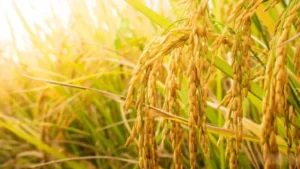
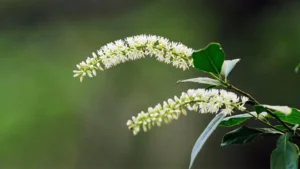
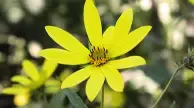


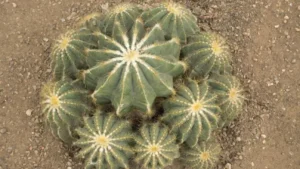
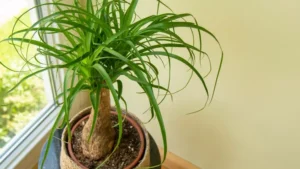


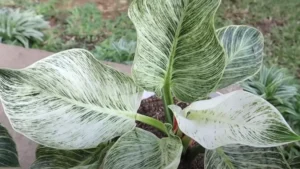
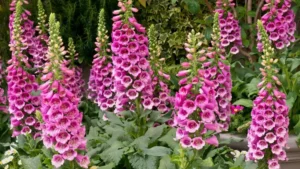
Leave your comment